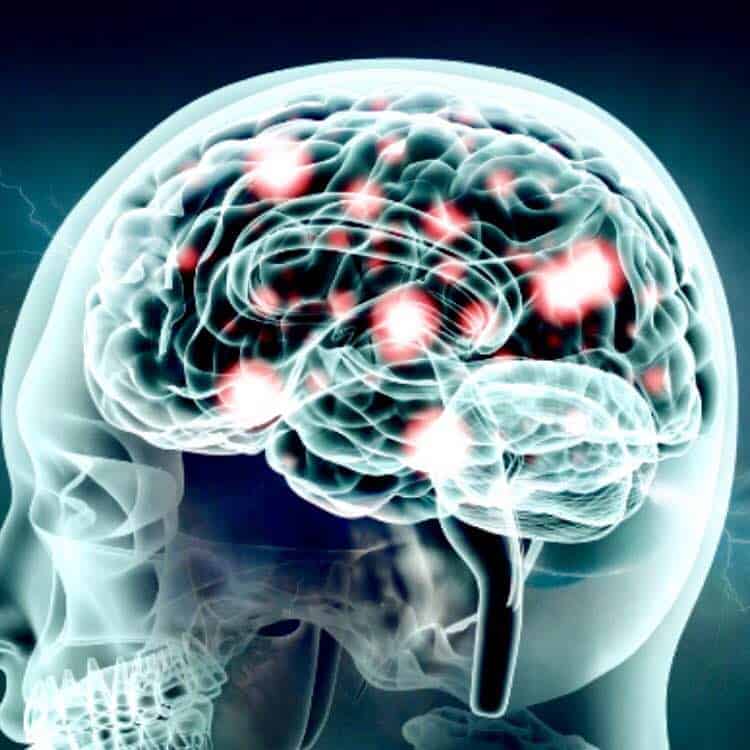What causes mental illness?
The causes of mental illnesses are a combination of genetic, biological, psychological, and environmental factors. Scientists have long since eliminated character defects or personal weakness as legitimate causes of mental illness.
Regarding the coping and recovery process, it is also not a matter of “sucking it up” or “pushing through,” despite what some uninformed individuals say; nor is coping and recovery a matter of self-discipline or willpower.
While it is believed that our biology, environment, genetics, and psychology influence – to some extent – the onset of mental illness, genetics (heredity) seems to correlate the strongest. That is, developing a mental illness from parental genes is more likely than through biological, environmental, or psychological experiences.
Scientists Explain The Link Between Genetics and Mental Illness

Heritable Mental Illnesses
“Most psychiatric disorders are highly heritable; the estimated heritability for bipolar disorder, schizophrenia, and autism (are) 80 % or higher … much higher than that of diseases like breast cancer and Parkinson’s disease.” – Burmeister, M., McInnis, M.G. & Zöllner, S.
Prior research has shown a relatively high heritability rate for the following mental illnesses:
- Alcohol dependence
- Anxiety disorders
- Attention-deficit hyperactivity disorder (ADHD)
- Autism and autism spectrum disorders
- Bipolar disorder
- Eating disorders (anorexia nervosa and bulimia nervosa)
- Major depressive disorder (MDD)
- Obsessive-compulsive disorder
- Schizophrenia
Per a study published in Nature Reviews, the estimated heritability for bipolar disorder, schizophrenia and autism are between 75 to 90%, which is much higher than that of breast cancer (5-60%) and Parkinson’s disease (13-30%).
Mental Illness Symptoms and Rates of Heritability
Alcoholism
Alcohol dependence records a heritability rate of 50-60%, affecting around 5% of the population. The disorder is characterized by persistent problems involving tolerance, psychological cravings, and behaviors centered around alcohol use or its consequences. Alcohol dependence has an age of onset around the mid-twenties.
Anxiety and Panic Disorders are Among the Most Common Mental Illness
Anxiety disorders are quite common, with a prevalence rate of nearly 30%. Every diagnosed case of clinical anxiety involves a “heightened sense of arousal or fear.” Physical symptoms include rapid heartbeat and sweating; with psychological symptoms centering around worry and fear.
Panic disorder, defined as “debilitating anxiety and fear that arises frequently and without reasonable cause” has a heritability rate of around 50%.
Childhood Mental Illness
Attention deficit-hyperactivity disorder (ADHD) symptoms include impaired attention capabilities and inappropriately-high levels of activity in quiet places, at work, or at school. Childhood ADHD is often marked by impulsivity, interruptive behavior, and constant fidgeting.
The prevalence of ADHD is around 8%, with an inheritability rate of 60-90%.
Autism and autism spectrum disorders (ASD) are a category of development delay disorders observed before age 2. Communication difficulties and engaging in repetitive behaviors are typical of autism and ASD patients. Symptoms of autism and ASD in toddlers include: not using gestures, withdrawal, loss of verbal or social skills, not using single words by 16 months or two-word phrases by 24 months, and not walking.
The heritability rate for autism and ASD is high – around 90%. The disorders are rare, with autism prevalence at .04% and ASD at .8%.
Bipolar Disorder
Bipolar disorder, also referred to as manic-depressive disorder, involves periods of mania and severe depression. Manic symptoms include compulsive fluctuations in energy, mood, and rates of thought and speech. Depressive symptoms mirror those of MDD, which are described below.
The onset of bipolar disorder (BP) occurs during late teens or early adulthood. The heritability rate of BP is between 60-85% and affects approximately 1% of the population.
Eating disorders, consisting of anorexia nervosa (AN), and bulimia nervosa (BN), have an early average age of onset: in the early to mid-teens. Heritability rates are around .6% and 1%, respectively.
Signs of AN include low body weight, an intense fear of weight gain, and a disordered body image (overweight). People with AN may restrict food intake or resort to self-induced vomiting or diarrhea.
BN signs include episodes of regular and recurrent binge-eating and loss of control of eating behavior. Feelings of severe guilt follow the episodes. During those times someone may self-induce vomiting, abuse laxatives, or engage in prolonged periods of intense exercise.
Mental Illness: Depression and Personality Disorders
Major Depressive Disorder (MDD) symptoms include severely depressed mood, extreme lack of energy and motivation, feelings of guilt, and pessimistically-inclined disturbances of thought.
The age of onset for MDD typically ranges from mid-twenties to mid-forties, with around 17% of the population affected at some point. The heritability percentage for MDD is approximately 40%.
Obsessive-compulsive disorder (OCD) is a subtype of anxiety that includes intrusive, reoccurring, and repulsive thoughts. Also, these couple with habitual behaviors. The prevalence rate of OCD is around 1.5% and is inherited 60-70% of the time. The typical age of onset is 19 years. However, it may occur later.
Schizophrenia falls into the diagnostic category of severe psychosis and includes the subtype classifications catatonic, disorganized, or paranoid. The clinical hallmarks of acute (short-term) schizophrenia include delusions and interference with thought processes. Chronic schizophrenia is the primary phase of the illness and is marked by apathy, lack of motivation, and social isolation.
Schizophrenia develops in the late teen and early adulthood years; has a heritability rate of 70-85% and affects about 1% of the U.S. population.










